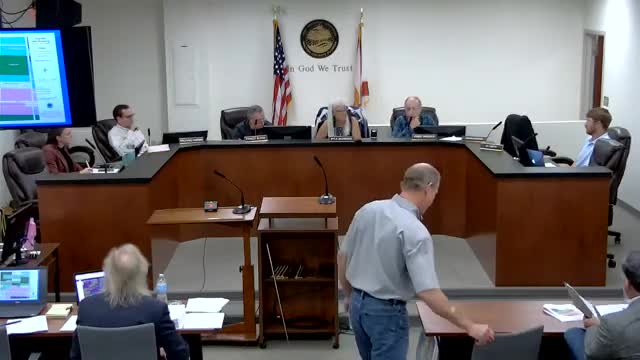Conservation advocates fight against risky development proposal
October 22, 2024 | Walton County, Florida
This article was created by AI summarizing key points discussed. AI makes mistakes, so for full details and context, please refer to the video of the full meeting. Please report any errors so we can fix them. Report an error »

During a recent government meeting, significant concerns were raised regarding conservation zoning and its implications for local environmental protection. A key speaker emphasized that much of the area in question is designated as conservation residential, a classification established to safeguard environmentally sensitive land, particularly low-lying areas. This designation dates back to a 1996 initiative linked to the Conservation Trust Fund, which highlighted the necessity for conservation without mentioning issues related to sewer or water availability.
The speaker pointed out that the current zoning regulations require the preservation of 60% of natural vegetation, a standard that would be eliminated under a proposed zoning change. This shift could potentially allow for clear-cutting of trees, raising alarms about the long-term impact on the local ecosystem. The speaker argued that while proponents of the change claim they would not remove all trees, the lack of legal obligation to preserve any vegetation poses a significant risk to the environment.
Additionally, the discussion touched on the limitations imposed by existing power line easements and conservation requirements, which would likely prevent the theoretical maximum of 19 dwelling units from being realized on the property. The speaker criticized the use of the term \"discouraged\" in the comprehensive plan regarding development near high hazard flood zones, asserting that this language is often overlooked, leading to detrimental outcomes as evidenced by recent flooding incidents in other states.
The meeting underscored the tension between development interests and environmental conservation, highlighting the need for careful consideration of zoning changes that could undermine established protections for natural resources.
The speaker pointed out that the current zoning regulations require the preservation of 60% of natural vegetation, a standard that would be eliminated under a proposed zoning change. This shift could potentially allow for clear-cutting of trees, raising alarms about the long-term impact on the local ecosystem. The speaker argued that while proponents of the change claim they would not remove all trees, the lack of legal obligation to preserve any vegetation poses a significant risk to the environment.
Additionally, the discussion touched on the limitations imposed by existing power line easements and conservation requirements, which would likely prevent the theoretical maximum of 19 dwelling units from being realized on the property. The speaker criticized the use of the term \"discouraged\" in the comprehensive plan regarding development near high hazard flood zones, asserting that this language is often overlooked, leading to detrimental outcomes as evidenced by recent flooding incidents in other states.
The meeting underscored the tension between development interests and environmental conservation, highlighting the need for careful consideration of zoning changes that could undermine established protections for natural resources.
View full meeting
This article is based on a recent meeting—watch the full video and explore the complete transcript for deeper insights into the discussion.
View full meeting